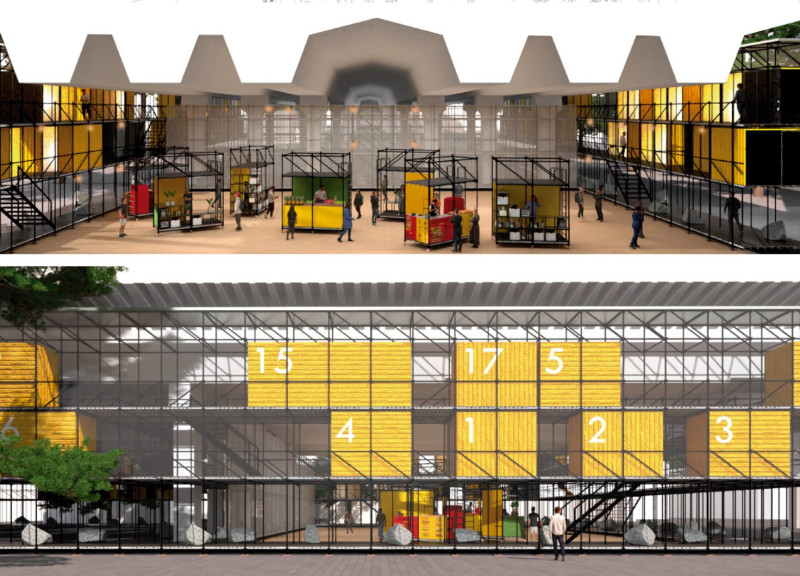5 key facts about this project
At its core, the project serves as a multifunctional space, catering to diverse activities that range from community gatherings to artistic exhibitions. This multiplicity of purpose underscores the importance of adaptability in modern architectural design. The building's layout is intuitive, guiding users through a sequence of spaces that are both interconnected and distinct, facilitating social interaction while providing areas for quiet reflection. The flow of the design allows for an efficient use of space, ensuring that each area serves its intended function without compromising the others.
The materials chosen for this architectural endeavor reflect a careful consideration of durability and environmental sustainability. A combination of recycled steel, natural timber, and locally sourced stone has been employed, creating a visually striking façade that resonates with the surrounding landscape. The use of large glass panels enhances transparency and creates a connection to the outside environment, drawing in natural light and providing expansive views. This transparency fosters an inviting atmosphere while reinforcing the project's relationship with its surroundings.
One of the unique design approaches evident in this project is its integration of green spaces. Rooftop gardens and vertical green walls have been incorporated into the design, not only enhancing the aesthetic quality but also contributing to the building's environmental sustainability by improving air quality and promoting biodiversity. These green elements also serve to create recreational areas for occupants, showcasing a commitment to wellness and community engagement within the architectural framework.
A notable feature of the project is its attention to detail in crafting bespoke spaces. Custom fixtures and furnishings have been designed to complement the overall aesthetic, enhancing the user experience. The interiors are characterized by open-plan layouts, facilitated by the use of modular partitions that can be adjusted to meet changing needs. This flexibility is indicative of an increasing trend in architecture to prioritize user-centered design, underscoring the importance of amenity and comfort in contemporary architectural practices.
Artificial lighting plays a crucial role in enhancing the architecture's ambiance, with strategically placed fixtures that accentuate key design elements and provide functionality without overwhelming the space. The careful balance of natural and artificial light ensures that each area maintains a warm, inviting atmosphere in both day and night settings.
This project embodies a forward-thinking approach to architecture that is attentive to the complexities of modern living. By addressing the needs of the community while promoting sustainable practices, it illustrates how design can contribute positively to urban environments. Its unique combination of functional spaces, thoughtful material selection, and integration of greenery positions it as a relevant example of contemporary architectural ideas.
For those interested in delving deeper into the nuances of this architectural project, it is encouraged to explore the architectural plans, architectural sections, and architectural designs presented. These elements will provide further insights into the creativity and intention behind this thoughtfully constructed space, illuminating the conceptual underpinnings that informed its development. Embracing the dialogue between architecture and context, this project stands as a testament to the potential of design to shape environments and influence human experience.























